
Ever since July 2022’s Detective Comics #1062, acclaimed comic book creator Ram V has steadily been providing a hauntingly ethereal look at Batman and his role in Gotham City.
Recently, the mysterious and powerful Orgham family returned to the city, revealing they had an extensive connection to Gotham and the families that helped shape it into the bustling DC Universe locale it is today. With Bruce Wayne outmaneuvered and overpowered at every turn, he is about to turn to an unlikely source for help as Ram’s elegiac and cerebral approach to the Dark Knight continues in March’s Detective Comics #1070.
Joined by artist Stefano Raffaele, colorist Adriano Lucas, and letterer Ariana Maher, Batman learns more about the Orghams and their shared ancient links to Ra’s al Ghul and the League of Assassins while monstrous threats fester in Gotham's forgotten corners. And though Batman may have barely survived his previous encounters with the Orghams and their minions, the demonic Azmer, the fight is far from over as he faces an even more punishing gauntlet ahead of him.
In an exclusive interview with Newsarama, Ram V unveils the hidden histories and inspirations behind the renewed battle for Gotham’s soul, asks the big existential questions about the Dark Knight’s true role in Gotham, and teases what readers can expect from his upcoming comic book series The Vigil, bringing together a new cast of Indian superheroes to the DCU this year.
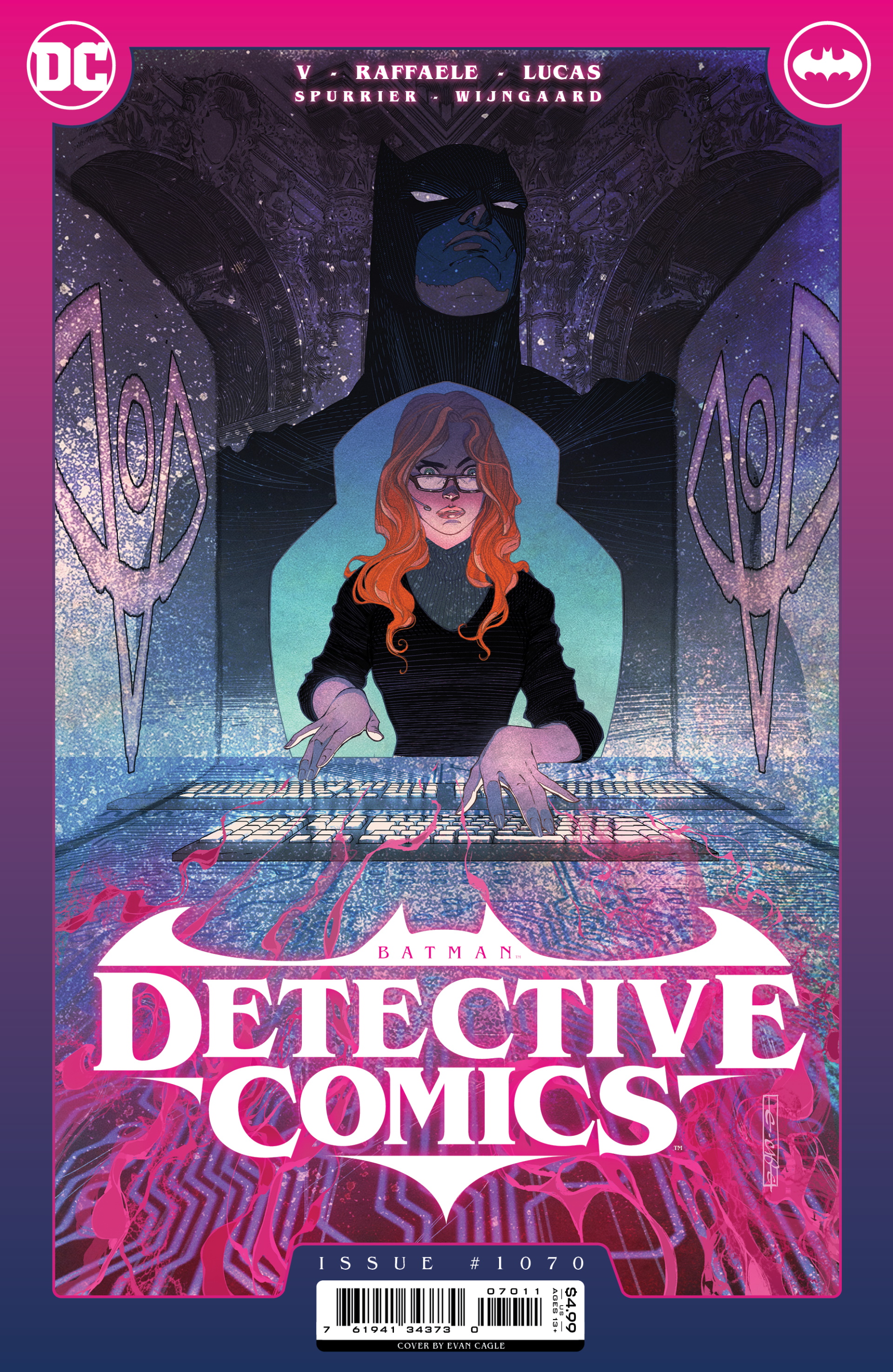
Sam Stone for Newsarama: Ram, so many writers refer to Gotham City as a character in their stories but your Detective Comics run places that axiom front and center, you’re not paying it lip service. How was it positioning so much of this story on this hidden history to Gotham that stretches even further back than the city’s founding?
Ram V: You’re not wrong at all in saying that Gotham is a character, but I already did a creator-owned book a while back called Paradiso where I investigated the idea of a city as a character. I wanted to do something a little more nuanced here, asking, “What do you feel about Gotham?” to the readers, Batman, the villains, and other characters. One of the most beautiful things about cities is that they mean such different things to different people. Depending what strata of society they’re from, what their interests are, what side of the political argument they fall on, every city is a completely different experience to every person.
When I first came to this, I came to this with the idea that the most immediately tangible trope is that Batman is always saving Gotham. What does that mean? Is he saving the architecture of the city, is he saving the history, its people? If so, what kind of people are you saving? Which people are you saving? The people that you’re saving them from, are those people not people of Gotham?
Comic deals, prizes and latest news
Get the best comic news, insights, opinions, analysis and more!
I feel like I hadn’t seen that kind of complexity addressed in a comic that is clearly about a person and their relationship to their city. Part of the whole operatic thing was to interrogate the character of Batman through his setting, environment, and his interactions with this place that has so much emotional history and anchoring for Batman. That was the direction that I wanted to push it.
Yes, Gotham is a character, but I’m more interested in what that means to you. Is it an evil city, a lovely city, a place of buildings, a place where your mother and father used to own a shop? These are such different, emotional painted strokes to develop a story.
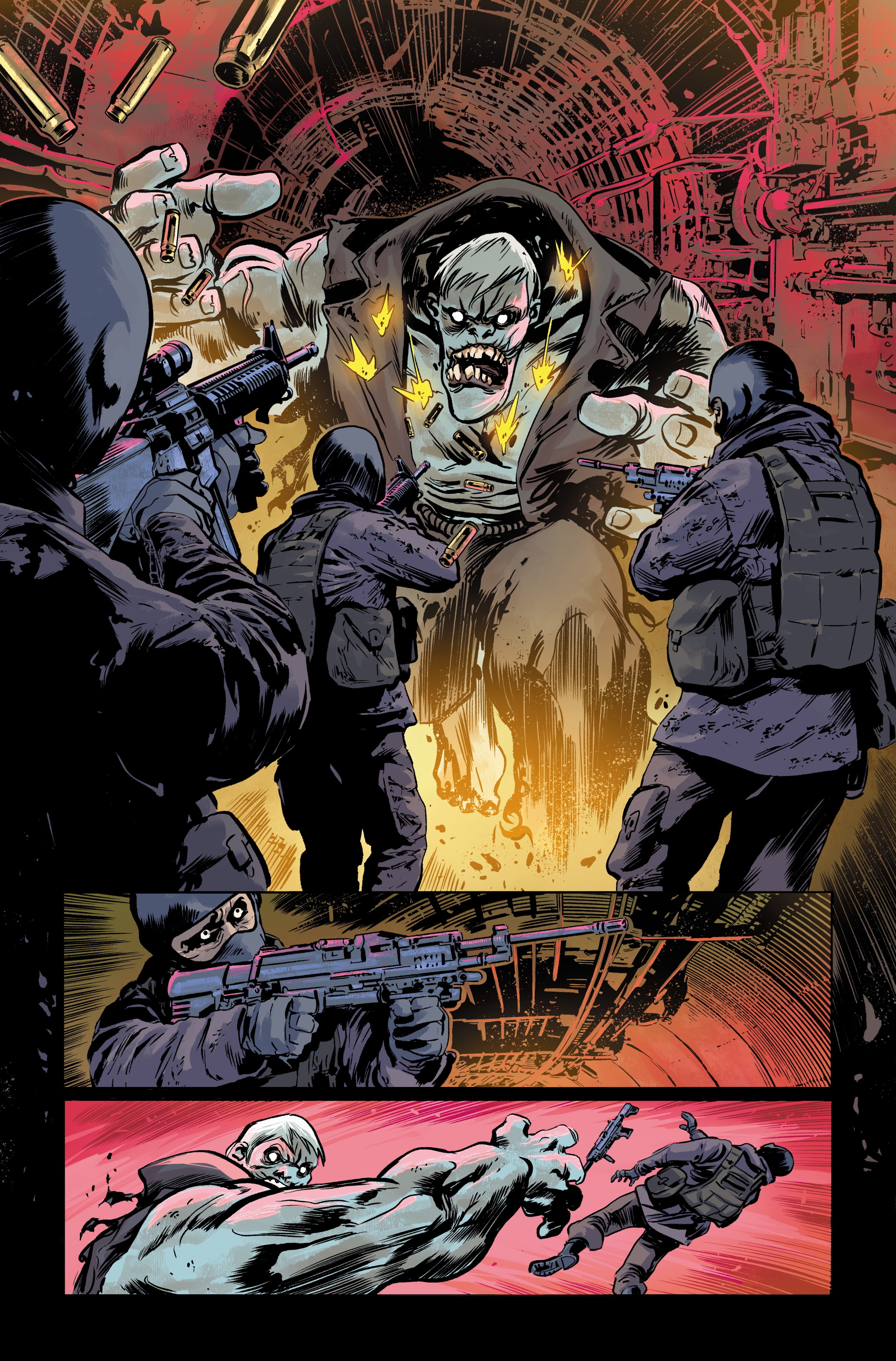
We’re seeing all these different characters offer insight on Batman, including Mr. Freeze, Two-Face, and Jim Gordon, while Bruce Wayne is at an existential crisis with how he sees himself. How did you want to refract Batman’s place through these different perspectives?
I’ve always been a very character-driven writer. I feel like the plot overstays its welcome very quickly if you don’t have characters that are following through that meandering plot. This was also planned as a very long run and you can plan for a very long plot, but people’s eyes will start glazing over eventually.
I had this experience with pretty much everything I’ve done, but particularly with Swamp [Thing] where, when people came in, there was this, “this isn’t Alec Holland so I’m not interested,” or, “this is not my Swamp Thing.” Over the course of the run, people were like, “I really understand the character now. I’m very invested in their victories and failures.”
I feel like I’m seeing a similar arc with Detective Comics, where at the start people were like, “What is this? This is a little bit slow? What’s this operatic stuff? I don’t get it!” But one or two issues in, people couldn’t look away. They were like, “What’s happening with Two-Face? What’s happening with Mr. Freeze? What’s happening with Batman?”
I really think that’s the way to tell an interesting story, to have this perspective on what Freeze thinks his relationship is with Batman. We always see him as a third-person observer and pass our judgment on Freeze, but I thought it was an interesting turn of events for Freeze to pass his judgment on Batman and his relationship with Gotham and similarly with Two-Face.
We’re going to see that with a few more villains before we ask this important question, “Batman, if you claim to save Gotham in every adventure and these people are still these broken and melancholy people with no place to stay in this city, have you really saved Gotham or any of these people?”
I think that’s a really interesting question to ask, and we’re going to ask that question and hopefully arrive at an interesting semblance of an answer that, for me, reframes who Batman is in relation to this city – at least the way I see it.
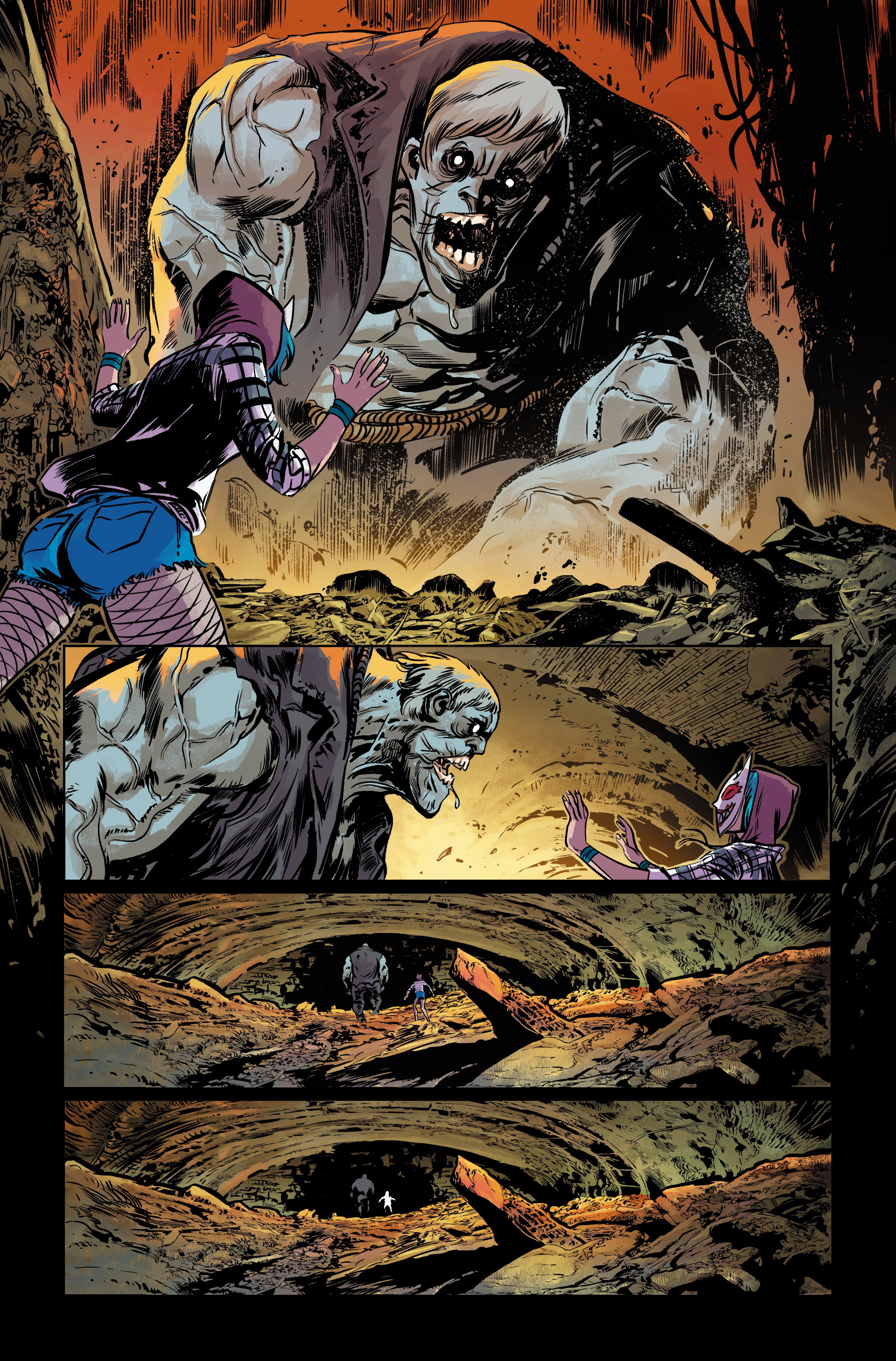
With Lazarus Planet, a lot of the DC landscape has changed. How did the premise of Lazarus Planet inform the direction or maybe serve as a catalyst for certain elements of your Detective Comics story?
It hasn’t yet. I’m trying not to give away too many spoilers but, starting with [Issue] #1070, we’re heading into that territory with Talia, the League of Assassins, and their shared history with the Orghams. Between Detective Comics #1070-1073, we’re going to have some stark revelations about the history of Ra’s al Ghul, how the Lazarus Pits came to be, where that power came from, and why the League of Assassins and the Orghams have historically been at odds with each other and why that eons-old conflict is coming to a head in Gotham right under Batman’s nose and he doesn’t even know it yet.
We see a lot of the Wayne family history in Gotham, but we also learn that the Orghams are both richer and have roots that run deeper. How did you want to position the Orghams to Gotham’s history in comparison to the Waynes?
I feel like a lot of people make this statement because it’s a cool statement to make that, “If only Bruce Wayne invested his money into Gotham, it would be a much better place.” I kind of wanted to challenge the idea behind that because, personally, I come from a third-world economy that, over the past decade or so, reinvented itself to become one of the fastest developing economies in the world.
A lot of people, very suddenly, had a lot of money. Has it made India better? I don’t know, that’s a very difficult question to answer because, fundamentally, money is amoral. It doesn’t matter how much money you put into it, it’s whoever’s putting in the money – their intentions, their ideologies – that will define whether the money does good things or bad things.
To speak of Bruce Wayne’s money as this independent force for good is ridiculous because look at all the examples of people with money investing them in – [fake coughs] Twitter – look at what that does. Because money is such an amoral force, it can be a force for good or a force for change that you never wanted in the first place.
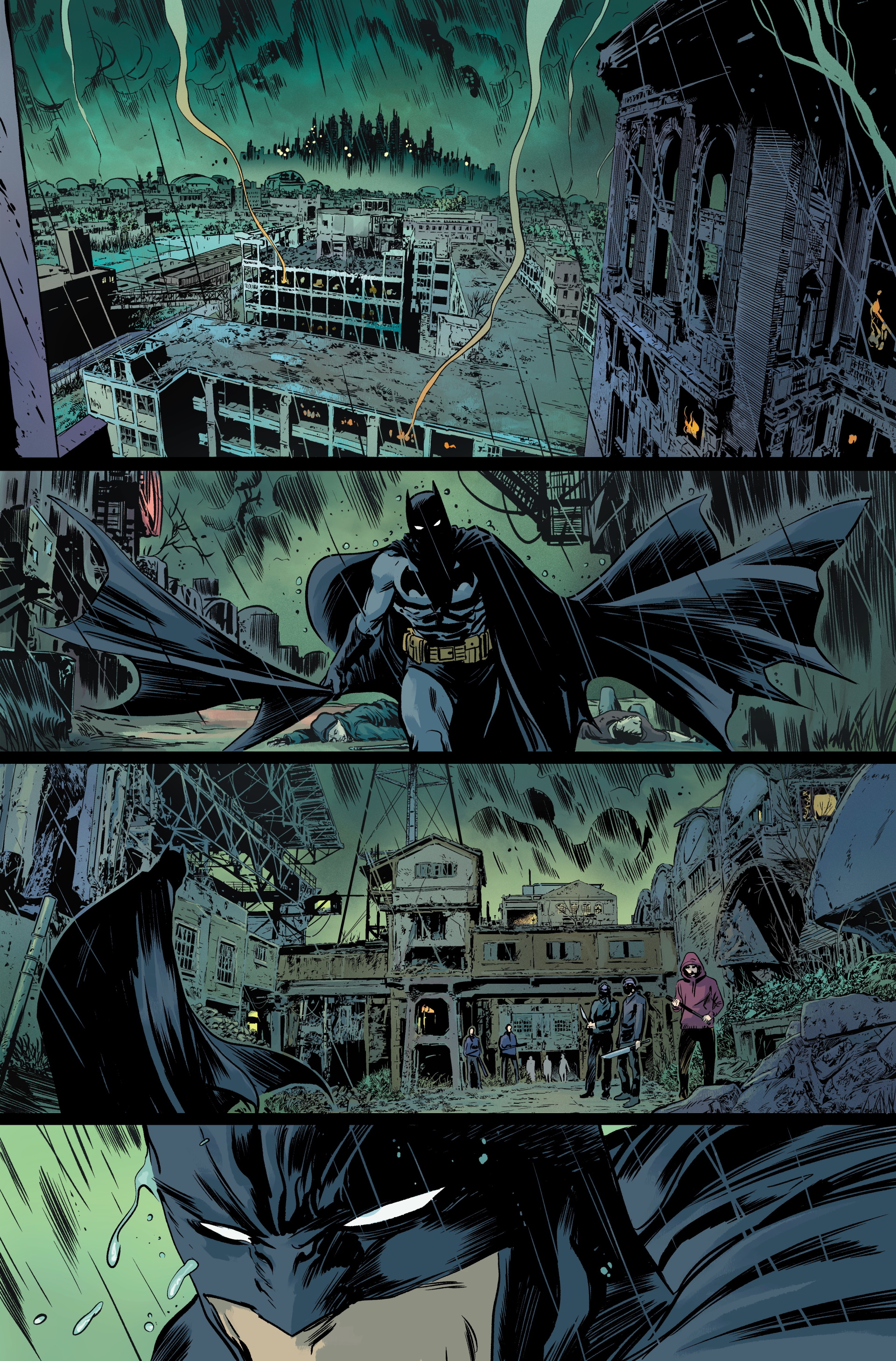
We have to give a shout-out to Stefano Raffaele. He’s got some big, kinetic action sequences coming up and his artwork is haunting and visceral in its own way. How has it been working with Stefano to bring this story to life?
My most favorite part of working with Stefano is his acting power. Of course he’s an established superhero artist working on Detective Comics, so of course he’s going to do the great, bombastic moments really well, but I don’t think that recent page [from Detective Comics #1069] with Gordon and Bruce would’ve worked anywhere near as well had Stefano not understood the nuances of facial expressions and acting, and that is really difficult to do.
I don’t know who said it, but someone asked another established artist on comic book art and they said, “Sure, you can draw superheroes, but can you draw a chair?” It seems flippant, but that really is the challenge. Can you meaningfully draw two people just having a conversation and make it feel emotionally impactful? Stefano has knocked it out of the park in that sense, both in Detective Comics #1069 and the upcoming issue with Bruce visiting his parents’ graves. I really admire and enjoy that in working with Stefano.
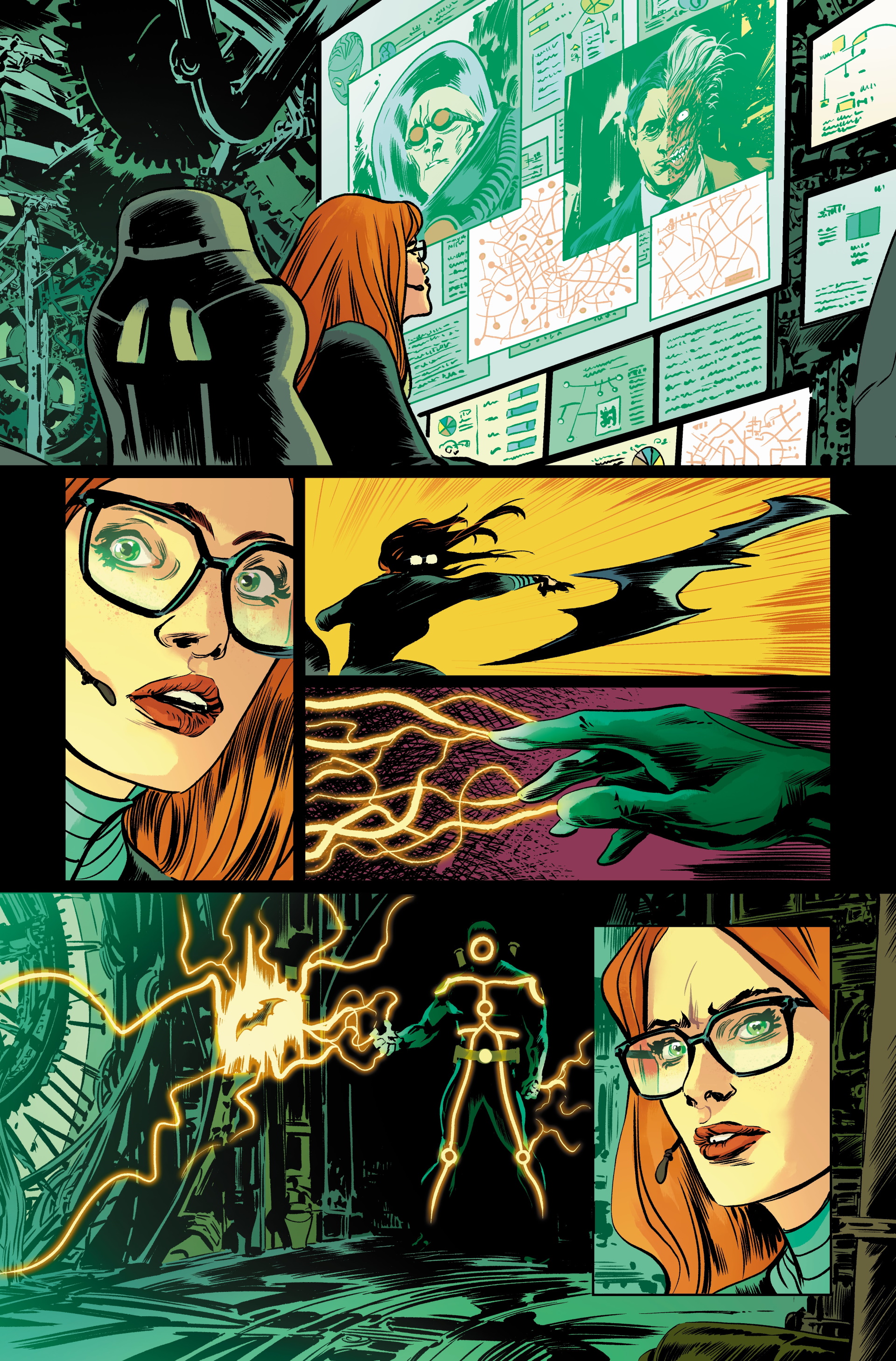
You and I have spoken before about how much Batman: The Animated Series has inspired your approach to Batman and the DC Universe. What influences did you want to bring from The Animated Series here and how did you want to bring your own storytelling sensibilities to them?
Fundamentally, I think that The Animated Series works as a series of one-shots. It does have greater narratives here and there but, largely, it’s not trying to build an overarching statement about Batman or Gotham. It does its single episodes really well, they’re all character-focused, and they’re all focused on developing your understanding of Bruce Wayne and the cast of characters that surround Batman. I feel like that’s the part that I brought into what would otherwise be a comic book arc. Hopefully at the end of this 20-30 issue arc, you’ll at least ask interesting questions about the way this character exists within their city and supporting cast.
With The Animated Series, I’m bringing that character focus and neo-Gothic aesthetic where simultaneously, things felt bombastic but also felt like old school, late ‘80s noir. I feel like that’s really worked for the book, where there is that noir aesthetic and that character focus but also we’re doing bombast. Not necessarily the bombast where characters are jumping off rooftops and punching each other but bombast in terms of looking at the stunning gown Talia is wearing as she’s standing in this theater proclaiming her love for Bruce, stuff like that.
I think that Gothic, operatic vibe comes through from that angle. I think it’s interesting for artists as well because you’ve got two dudes about to duke it out but then you ask Ivan Reis if he can draw a scene of a desert wedding and he goes, “Yeah, that’s my jam! I’d love to do it!” It’s really cool to get your collaborators excited as well.
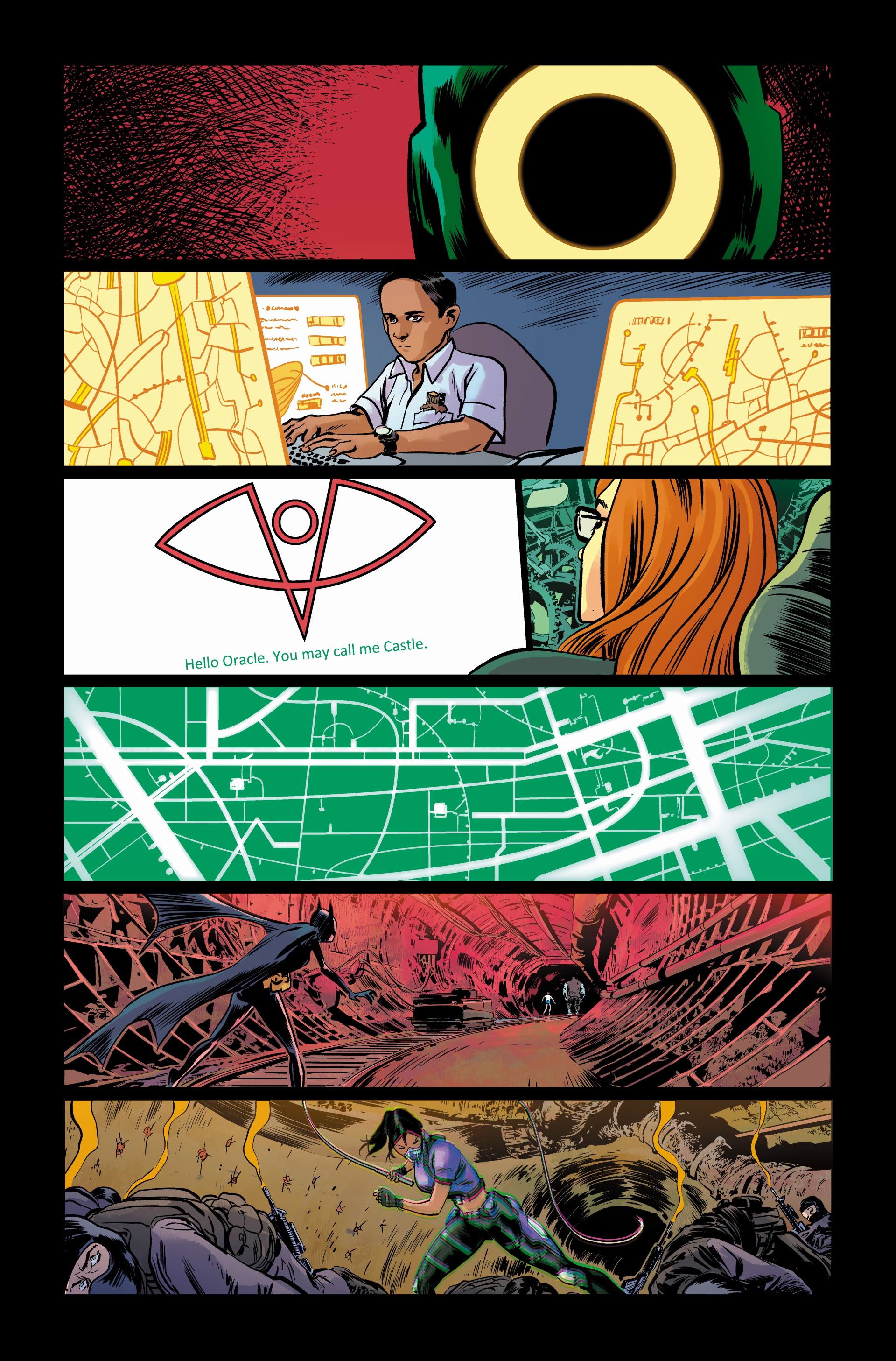
Let’s talk about The Vigil. What did you want to bring to the DCU with this particular set of characters?
When I first started writing comics, and maybe four or five issues into writing stories for DC, I came to the editors and said, “I think the DCU needs more Indian characters,” and a lot of my work played with developing these characters as well. Randhir Singh was a character that had been around in Jack Kirby’s Demon and nobody had done anything with the character for ages and suddenly [I gave him] a four-issue arc in Justice League Dark.
I was able to say, “Here’s what it's like to be a Sikh. This is what they really believe in.” Now Randhir Singh – previously known as Randu Singh – is no longer a trope of a turban-wearing dude who shows up with ESP abilities. This is a Sikh and now you know what that feels like and what that means. I want to bring that kind of authenticity and truth to a lot of characters and I want them to come from India.
I want people to know what modern-day, contemporary India feels like. That was a really interesting aesthetic choice, the contemporary and modern nature of it because the first instinct of setting something in India is to go with the mythology, mysticism, and metaphysical and spiritual aspects of it but, of course, that is cliche, filled with stereotypes, and where a lot of narratives tend to go.
I started off reading comics in India, being really good friends with Doom Patrol fans, so I said to DC, “Let’s do a set of characters in India but let’s do them as the Doom Patrol,” because, if you take the obsessions of things like Doom Patrol or Planetary or any of the WildStorm stuff, they looked at aspects of American science fiction. You look at them and they’re tongue-in-cheek, with what Doom Patrol or Planetary did, looking at modern-day espionage noir.
These were largely American- or European-centric of what these things meant but now you take those things and bring them to India and you start to get really weird and strange stories. Conspiracy stories in America are about satellites spying on us and looking into our brains whereas conspiracy stories in India are about finding a chamber under a temple in South India that contains more gold than the economy of a small country. What happened to that gold, where did it go, and what are they doing with it? Nobody knows! They’re different kinds of conspiracy theories, they come from different places.
India also had a slew of really weird knock-off comics featuring clearly unauthorized versions of Batman, Superman, and other heroes from the DCU. Now that I’m writing in the DCU and taking context from Indian history, suddenly I can do stuff with that. If alternate realities are true, there’s a knock-off version of Batman running around. That kind of stuff is really interesting to me and it brings India, in a way to people who might not know that side of India exists, to the DCU.
I’ve done stuff like that before with The Many Deaths of Laila Starr, Grafity’s Wall, and These Savage Shores, but I’m excited to do that with something that’s out-and-out superheroes and is very much entrenched in the DCU. These are not characters in India that you’re hearing about, these are characters that are hanging out in Gotham, stealing from Lex Luthor, that are going to run up against the Red Hood at some point. These are characters that are very much part of the DCU.

Ram, what else can you tease as head into the second act of this opening Detective Comics story?
If you thought Batman was in trouble over the first arc – I think he got beaten up three times and had to recover – you ain’t seen nothing yet. [laughs] We’re going to have Batman in a lot of trouble. I don’t think we’ve put Bruce, at least not in recent memory, in this kind of jeopardy. It’s not only a physical threat to his life, but also an existential threat to his place as Batman in Gotham.
Beyond that, a lot of people came to this book for its aesthetic, which we said was going to be operatic and Gothic, but nobody said it had to stay that in its entirety. We’re looking forward to doing arcs where it’s Gothic and operatic, but inspired by Sergio Leone Spaghetti Westerns, and there’s an arc inspired by David Lynch coming up. The aesthetic view of the book is going to change with each of these acts so stay tuned, it gets a lot weirder!
Detective Comics #1070 goes on sale March 28.
Check out the best Batman comics of all time.
Sam is a freelance writer contributing to GamesRadar+. Sam has been working in entertainment journalism since 2016 for outlets including CBR, Popverse, /Film, and more, conducting interviews and writing reviews and columns covering comic books, television, film, and video games. With an expertise spanning the breadth of pop culture, Sam is especially knowledgeable on Star Trek, Nintendo, and DC Comics. In his free time, Sam likes to play guitar poorly and travel around the world.


